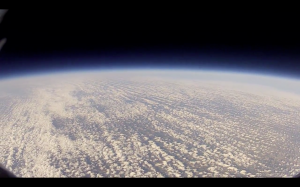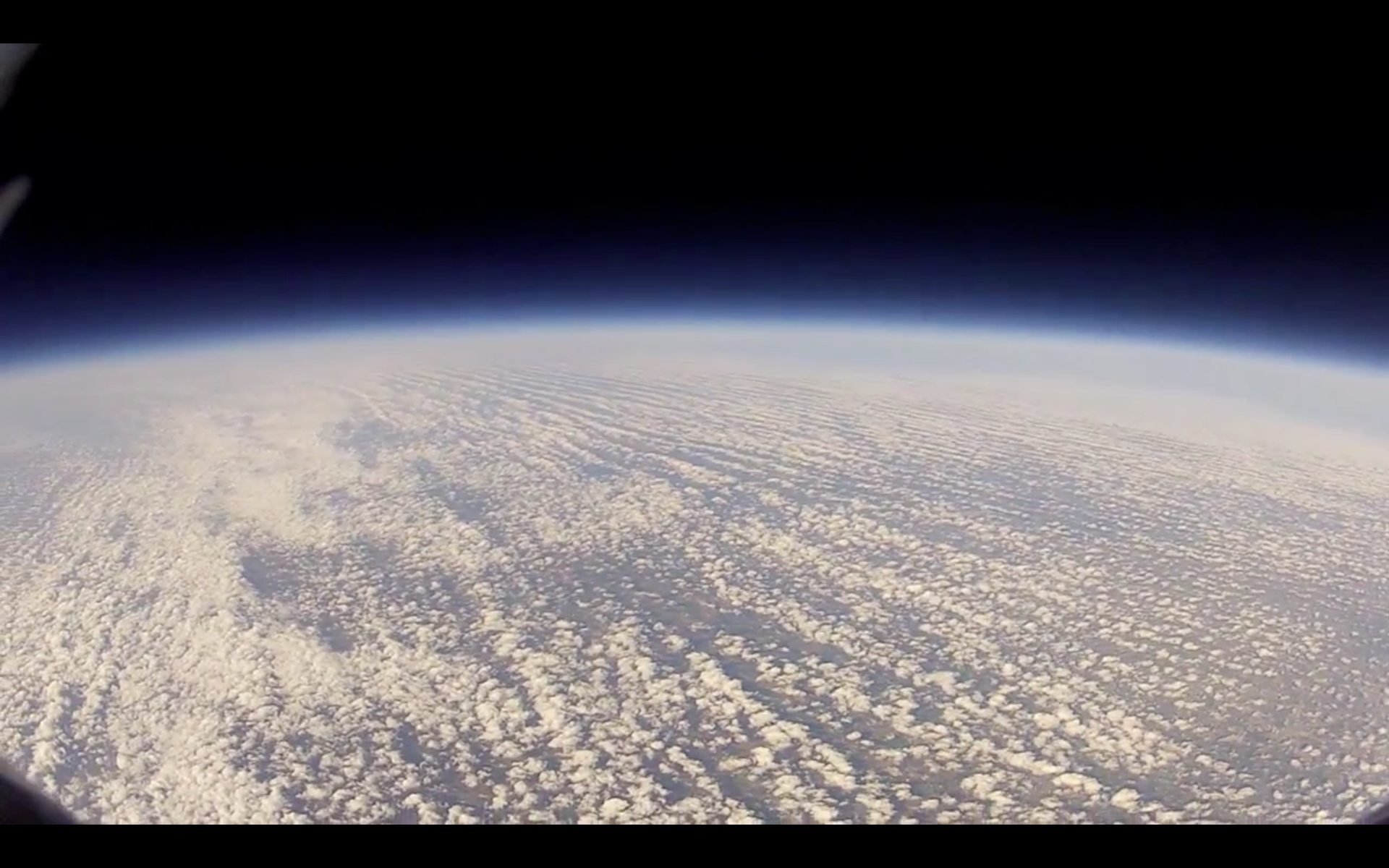By Kirsten Mahon/tr news editor
Some things once unimaginable are now possible.
YouTube and Wikipedia explain the when, where, what and how-to-do-it for almost everything, but having the knowledge is different from using it.
TR student Jordan Wright built a contraption, which he calls a payload, that he launched into the sky last May. The camera placed inside with a peephole to the world filmed its path as it rose out of Tarrant County through clouds crossing airlines and finally traversing the outer layers of the atmosphere.

The payload, made out of a Styrofoam cooler, duct tape, a parachute, a balloon and a GoPro camera reached a height of 124,000 feet before the balloon, fixed to the inside of the parachute, popped and the payload came down, all the while filming the entire experience.
About two hours after launch, the GPS-enhanced payload landed back in Tarrant County, 30 miles from its launch site and only a mile off its predicted landing site. The woman who found it was skeptical, Wright said.
“She didn’t know what to expect,” he said.
The payload was wrapped in multi-colored duct tape with Wright’s name and phone number laminated to the top. “HARMLESS SCIENCE EXPERIMENT” also was typed across the top of the payload along with his other information.
“That didn’t stop her from calling the fire department,” he said.
The founder of the fallen object apparently believed it was radioactive because it had fallen from space. She kicked the contraption, Wright said, and then carefully examined it before calling safety personnel. In the end, she called Wright as well.
Wright was pleased with footage his GoPro camera had produced. He didn’t have anyone to tell him how to do it, but as a geophysics major, he knew how something would work.
“As long as you are prepared for vicissitudes of nature,” he said, “you have to consider water landings, temperature difference and night recovery.”
He knew the balloon would expand at a certain height in the atmosphere and eventually pop, so he filled his balloon three- fourths full with helium to allow for later expansion. He arranged the payload with a convection system to keep the camera and GPS device cool when it began to break through the outer layers of the atmosphere and to keep it warm as it rose up into the sky.
According to his research, the camera was supposed to break, Wright said. He did it anyway, preparing the camera for all possibilities since it could land anywhere.
“I read that it doesn’t work,” he said. “You end up transcending whatever bounds you had previously set for yourself.”
The video is on YouTube. A friend from Oklahoma drove down to film the launch preparation, and that same camera ascended in the payload at 1,333 feet per minute, Wright said.
“In about seven to 10 seconds, it passed the airlines,” he said.
Wright is proud of his work. Other YouTubers have done the same thing with their own Go-Pro cameras, but research indicates not many have launched it as high as Wright’s payload. Some came close, but Wright said their footage wasn’t as clear.
“I wanted people to see something they take for granted from a different perspective,” he said.
Wright was hoping viewers could see some beauty in something they view every day.
The 23-year-old is about to transfer to the University of Texas at Austin. He is currently working on another payload he hopes to launch this summer to get footage of a rare phenomenon never seen from the U.S.
His current video online ends with a Mark Twain quote:
“Twenty years from now, you will be more disappointed by the things that you didn’t do than by the ones you did do. So throw off the bowlines. Sail away from the safe harbor. Catch the trade winds in your sails. Explore, dream, discover.”
Click here to view Wright’s video.

